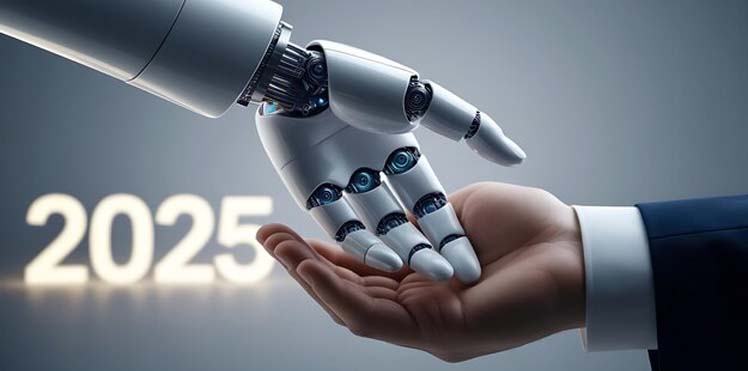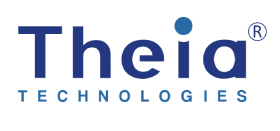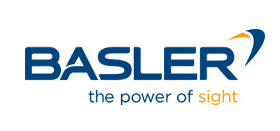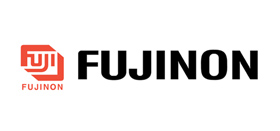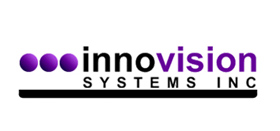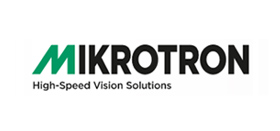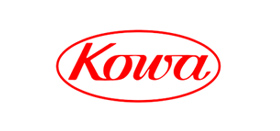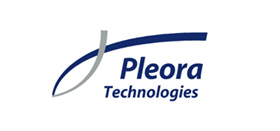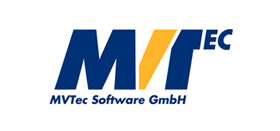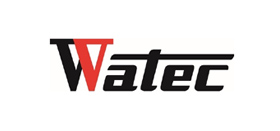Listen to this Article
The predicted trends for robotics 2025 are poised to reshape the landscape of technology and business operations. With advancements in artificial intelligence, collaborative robots, and autonomous systems, industries will experience a transformation that enhances efficiency, safety, and innovation.
Advanced AI Integration:
The integration of artificial intelligence to enhance decision-making processes and optimize workflows will continue to trend in 2025. Robot manufacturers— including programmable robots— are creating generative AI-driven interfaces that allow users to control robots more intuitively, using natural language instead of code. As a result, robots can understand and respond to complex situations, process natural language, and even demonstrate creative thinking through enhanced AI capabilities.
Collaborative Robots (Cobots):
More user-friendly cobots will be widely used on production lines, allowing humans to work alongside them seamlessly. These cobots will have intuitive interfaces that make interaction simple and effective. Enhanced safety features enable them to detect human presence and adjust their actions to prevent accidents, fostering a safer work environment. Additionally, these collaborative robots will be capable of learning and adapting to new tasks quickly, reducing the time and cost associated with traditional training programs. As a result, businesses can increase productivity and flexibility while empowering their workforce with technology that complements human skills and creativity.
Autonomous Mobile Robots (AMRs):
AMRs with advanced navigation systems will become commonplace in warehouses and logistics for efficient material handling. They can autonomously navigate complex environments using cutting-edge mapping and obstacle-avoidance technologies that will transform inventory management and supply chain operations. These robots will seamlessly coordinate with human workers, ensuring tasks are completed swiftly and accurately. By leveraging machine learning algorithms, AMRs will continuously improve their performance, adapting to layout or inventory flow changes without human intervention. This will reduce operational costs, minimize errors, and enhance productivity, setting a new standard for efficiency in the logistics sector.
Soft Robotics:
Soft robotic manipulators will be developed to handle delicate items in the electronics and food processing industries. These manipulators, inspired by the flexibility and adaptability of natural organisms, will be crafted from soft, pliable materials that can safely interact with fragile objects without damaging them. This innovation will be particularly beneficial in tasks that require precision and a gentle touch, such as assembling sensitive electronic components or packaging delicate food products.
Surgical Robotics:
Precise surgical robots with minimally invasive capabilities will improve medical procedures and patient outcomes. These robots can perform complex surgeries with unparalleled precision and accuracy using advanced imaging technologies and AI-driven analytics. They minimize human error, reduce recovery times, and enhance the overall quality of care. Surgeons will benefit from robotic assistance that offers enhanced dexterity and control over intricate procedures, leading to fewer complications and improved success rates.
Robotic Exoskeletons:
Exoskeletons designed to enhance human strength and endurance will be used in manufacturing and healthcare. These robotic exoskeletons will significantly support workers by reducing physical strain and the risk of injury, thus promoting a healthier and more productive workforce. In manufacturing, they will enable workers to lift heavy objects easily, increasing efficiency and reducing downtime caused by fatigue. In healthcare, exoskeletons will assist in rehabilitation, helping patients regain mobility and strength more quickly. As technology advances, these devices become more lightweight, affordable, and user-friendly, further integrating into everyday work environments.
Swarm Robotics:
Swarm robotics are groups of smaller robots for coordinated tasks in hazardous environments, like disaster response. These swarm robotics systems can operate like a colony of bees or ants, where each robot performs a specific function, but collectively, they achieve complex objectives. By leveraging collective intelligence, these smaller robots can adapt to dynamic and unpredictable situations, improving the speed and efficiency of operations in challenging settings such as search and rescue missions. Their ability to communicate and coordinate in real-time makes them invaluable in scenarios where human intervention is risky or impractical.
Advanced Sensor Technology:
Improved sensors will enable robots to perceive their environment with greater accuracy and detail. These sensors will incorporate innovations such as enhanced vision systems, tactile feedback, and environmental awareness, allowing robots to interact more intelligently and safely with their surroundings. By providing precise data, these advanced sensors will improve robots' ability to perform intricate tasks requiring high sensitivity and adaptability. These sensors will also play a crucial role in applications ranging from autonomous vehicles to healthcare, where precise environmental perception is essential.
The Importance of the Lens:
As robotics continues to evolve and expand into new frontiers, precise optics is crucial. By leveraging the capabilities of lenses like the ViSWIR series, detailed, accurate, and actionable data can be gathered across different spectrums. ViSWIR lenses are engineered for the latest SWIR imaging sensors (IMX990/IMX991) and offer a fully-corrected focus shift in the visible and SWIR range (400nm-1,700nm). Their advanced design and compatibility make them ideal for various robotic, machine vision, UAV, and remote-sensing applications, simplifying the imaging process and ensuring consistent performance across different wavelengths and working distances.
In addition, plug-and-play lenses are widely used in robotics applications. These lenses provide the visual input required for robots and AI systems to perceive and interact with the environment. Whether it's object recognition, navigation, or autonomous systems, these lenses empower robots to perform complex tasks accurately.
The LensConnect Series of plug-and-play lenses opens a world of possibilities for businesses across various industries. From industrial automation to security and surveillance, these lenses offer exceptional image quality, ease of use, and compatibility with different systems. From industrial automation to warehouse operations, the LensConnect Series lenses provide unparalleled image quality, versatility, and ease of use.
MV Asia Infomatrix Pte Ltd:
Machine Vision System Dealer in Singapore, UAE, and Dubai region. We are a Dealer and Exporter of Inspection Machine Vision.
Source: computar.com
Also Read: From Science to Solutions: The Future of Multispectral and Hyperspectral Imaging Applications
Back to All Robotics and Autonomous Systems Articles, Resources and News


